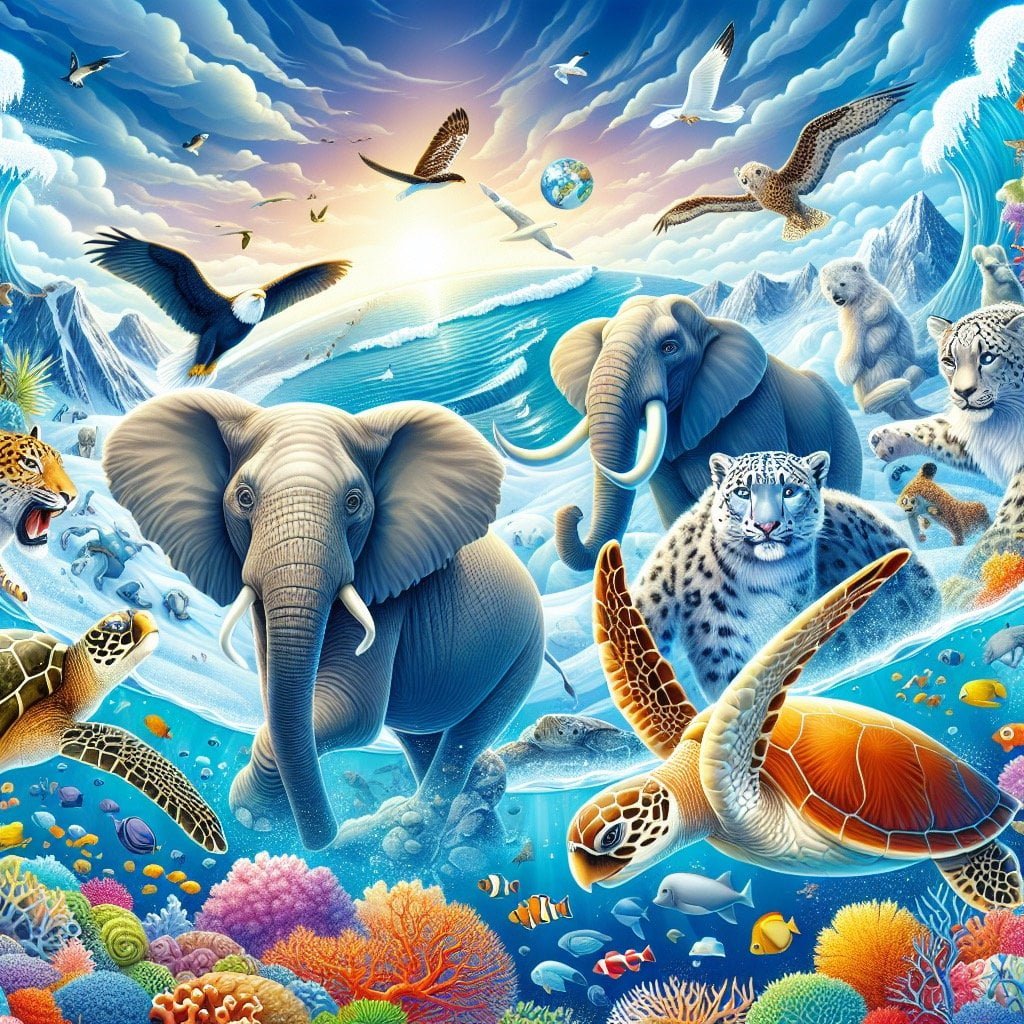Welcome to a deep dive into fascinating Shark Facts For Kids! Sharks are incredible creatures that never cease to amaze with their unique characteristics and adaptations. From their boneless skeletons made of cartilage to their super senses and ability to glow in the dark, sharks are truly fascinating marine animals. As an expert in the field, I am excited to guide you through a journey of discovery about these apex predators of the ocean. Through fun and engaging facts, we will explore the world of sharks and uncover the mysteries of their behavior, personalities, and importance in maintaining healthy ocean ecosystems. Join me as we embark on an educational and exciting adventure to learn all about the wonders of sharks and their captivating world. Let’s dive in!
Shark Facts For Kids
1. Sharks Don’t Have Bones

For younger kids: Sharks have skeletons made of cartilage, which is the same bendy material that makes up our noses and ears.
For older kids: Unlike humans and most other animals, sharks don’t have bones. Their skeletons are made of cartilage, a lightweight and flexible material that’s also found in our noses and ears, giving them their amazing agility and speed.
Detailed explanation:Sharks are fascinating creatures that have captured the imagination of people of all ages, especially kids. One interesting fact about sharks that is sure to captivate young minds is that sharks don’t have bones. Instead of bones, sharks have skeletons made of cartilage. This gives them a unique advantage as it makes them lighter and more agile in the water.
Cartilage is a tough, elastic tissue that is found in many parts of the body, including the nose and ears of humans. In sharks, cartilage makes up their entire skeletal system, from their jaws to their fins. This cartilaginous skeleton is not only lighter than bone, but it is also more flexible, allowing sharks to move swiftly and with precision in the water. This flexibility is crucial for hunting and navigating their underwater environment.
Despite not having bones, sharks are still top predators in the ocean. Their powerful jaws filled with rows of sharp teeth make them formidable hunters. They have keen senses that help them detect prey from miles away, and their streamlined bodies allow them to swim at incredible speeds. All of these adaptations make sharks successful apex predators in their marine ecosystems.
Learning about shark facts for kids can help inspire a sense of wonder and appreciation for these incredible animals. By understanding their unique characteristics, children can develop a deeper respect for the diversity of life in the ocean. Sharks may not have bones, but they certainly have a special place in the hearts of those who study and admire them.
Shark Facts For Kids
2. Sharks Have Super Senses

For younger kids: Sharks can smell a single drop of blood in a swimming pool!
For older kids: Sharks have an incredible sense of smell and can detect a drop of blood in over a million drops of water. They also have excellent vision and can sense tiny movements in the water with their lateral line system.
Detailed explanation:Sharks are truly fascinating creatures that possess some incredible super senses. These abilities help them navigate their underwater world, hunt for prey, and avoid potential dangers. One of the most well-known senses that sharks have is their incredible sense of smell. Sharks have nostrils located on the underside of their snouts, which are specifically designed to detect even the faintest scent of blood in the water. This keen sense of smell helps sharks locate prey from great distances, making them efficient hunters in the ocean.
In addition to their sense of smell, sharks also have an impressive sense of hearing. While they do not have external ears like humans, sharks can pick up on vibrations and sounds through receptors located in their inner ears. This helps them detect nearby movement, including the vibrations of struggling fish or injured prey. Sharks are able to pinpoint the exact location of their potential meal using this sense of hearing, allowing them to strike with precision.
Furthermore, sharks have an amazing sense of vision. Their eyes are equipped with special adaptations that allow them to see in low-light conditions and distinguish colors. Some shark species, such as the hammerhead shark, even have a 360-degree field of vision thanks to their unique eyes positioning. This gives them a distinct advantage when hunting in murky waters or stalking prey.
Overall, the combination of super senses in sharks makes them formidable predators in the ocean. These abilities help them thrive in their environment and ensure their success as top predators. Understanding these fascinating Shark Facts For Kids can help us appreciate and protect these incredible creatures for future generations to enjoy.
Shark Facts For Kids
3. Some Sharks Can Glow in the Dark
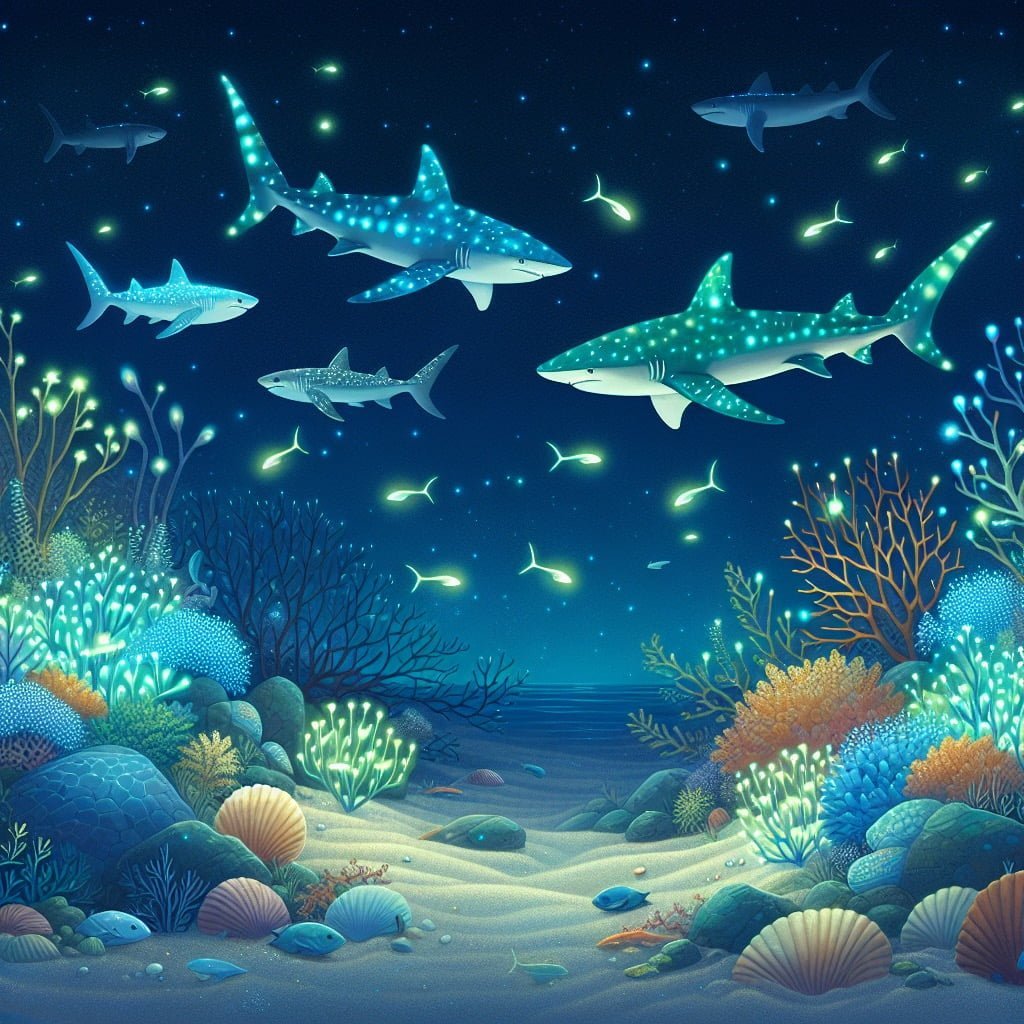
For younger kids: Certain sharks have special cells that make them light up like stars!
For older kids: Some species of sharks have bioluminescent cells in their skin that make them glow in the dark, helping them camouflage and communicate with each other in the deep ocean.
Detailed explanation:Shark Facts For Kids: Some Sharks Can Glow in the Dark
One fascinating aspect of sharks that many people may not be aware of is their ability to glow in the dark. This phenomenon, known as bioluminescence, is seen in certain species of sharks and is caused by special cells called photophores that contain light-producing chemicals. These photophores are located on different parts of the shark’s body, such as along their belly or around their eyes, and can emit a soft blue or greenish glow.
One of the most well-known species of bioluminescent sharks is the lanternshark, which can be found in the deep waters of the ocean. These sharks use their glowing abilities to communicate with other members of their species, attract prey, or even camouflage themselves from predators. For example, a lanternshark may use its glowing belly to blend in with the faint sunlight filtering down from above, making it harder for predators below to spot them.
It is important to note that not all sharks exhibit bioluminescence, and scientists are still studying the reasons behind why some species have developed this unique trait. By learning more about these fascinating creatures and their adaptations, we can gain a better understanding of the diverse and mysterious world of sharks. So next time you’re exploring the depths of the ocean, keep an eye out for these glowing marvels of nature. Shark Facts For Kids truly are amazing!
Shark Facts For Kids
4. Sharks Have Been Around for Millions of Years
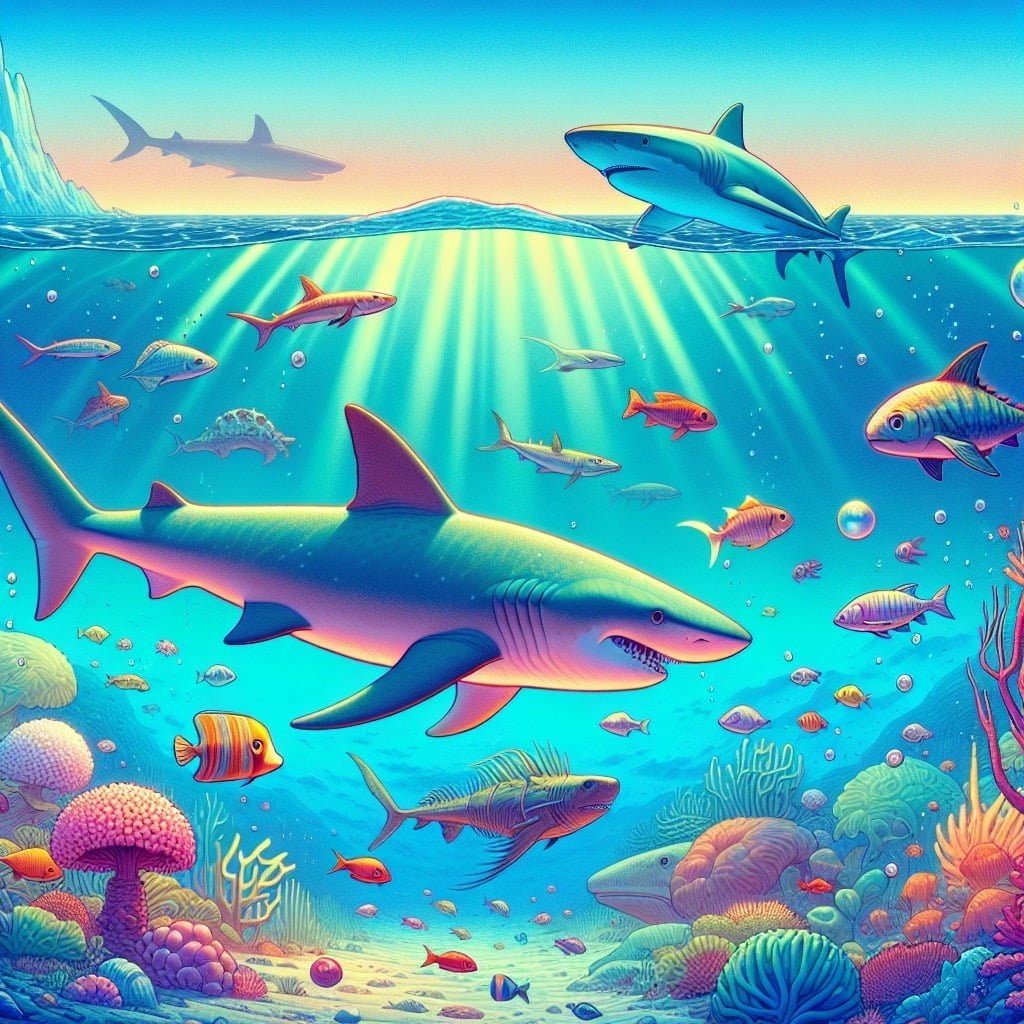
For younger kids: Sharks have been swimming in the ocean longer than dinosaurs walked on land!
For older kids: Sharks have existed for over 400 million years, making them older than the dinosaurs. They have survived several mass extinctions and have evolved into a diverse and successful group of ocean predators.
Detailed explanation:Sharks have been swimming in our oceans for millions of years, making them one of the oldest species on Earth. These fascinating creatures have been around since before the dinosaurs roamed the planet, with fossils dating back over 400 million years. This fact alone showcases just how resilient and adaptable sharks truly are.
Shark Facts For Kids are abundant, as children are often fascinated by these mysterious creatures of the deep. Sharks come in all shapes and sizes, from the massive whale shark to the tiny dwarf lantern shark. They can be found in oceans all around the world, from the cold waters of the Arctic to the warm tropical seas.
One of the most interesting Shark Facts For Kids is that sharks have an incredible sense of smell. They can detect a drop of blood in the water from miles away, making them efficient hunters. Sharks also have multiple rows of teeth that they can lose and replace throughout their lifetime. This allows them to continually grow new teeth, ensuring they always have sharp and efficient tools for catching their prey.
Despite their fearsome reputation, sharks play a crucial role in our oceans as top predators. They help to keep marine ecosystems in balance by controlling the populations of other marine animals. Without sharks, certain species would become overpopulated and disrupt the delicate balance of the ocean food chain.
In conclusion, Shark Facts For Kids are not only fascinating but also highlight the importance of these magnificent creatures in our oceans. By learning more about sharks, we can develop a deeper appreciation for the role they play in maintaining a healthy marine environment.
Shark Facts For Kids
5. Sharks Can’t Stop Swimming

For younger kids: Some sharks have to keep moving to breathe and stay alive.
For older kids: Certain species of sharks, like the great white shark and mako shark, have to swim constantly to pass water through their gills and get the oxygen they need to survive. This is called “obligate ram ventilation.”
Detailed explanation:Sharks can’t stop swimming, a fact that is crucial to their survival. Sharks have a unique respiratory system that requires them to keep swimming in order to breathe properly. Unlike most fish that have a system of using their gills to extract oxygen from water, sharks rely on a different method called “ram ventilation”. This means that they must keep water flowing over their gills in order to extract oxygen from it.
If a shark stops swimming, water stops flowing over its gills and they are unable to extract oxygen from it. This would result in suffocation and eventually death. Additionally, sharks also need to keep swimming to maintain their buoyancy in the water. Without the forward motion provided by swimming, sharks would sink to the ocean floor.
Sharks are constantly on the move in search of food, mates, and suitable habitats. Their streamlined bodies and powerful tails enable them to swim efficiently for long distances. Some species of sharks, like the great white shark, are known for their long migratory journeys across oceans.
In conclusion, sharks simply can’t afford to stop swimming. It is a vital behavior for their survival and plays a key role in their unique respiratory system. Teaching children about Shark Facts For Kids can help them understand and appreciate these fascinating creatures and the important role they play in maintaining the health of our oceans.
Shark Facts For Kids
6. Sharks Have Multiple Rows of Teeth

For younger kids: Sharks have lots of teeth and when one falls out, another one moves forward to take its place!
For older kids: Sharks have multiple rows of teeth that are constantly being replaced throughout their lives, with some species shedding thousands of teeth in a year. This allows them to always have sharp, functional teeth for catching prey.
Detailed explanation:Sharks are fascinating and often misunderstood creatures of the sea. One of the most intriguing Shark Facts For Kids is that they have multiple rows of teeth. This is known as polyphyodonty, a unique dental feature that sets sharks apart from other animals.
Unlike humans, who only have one set of teeth that are continuously replaced throughout their lives, sharks have rows of teeth that are constantly growing and being replaced. In fact, some sharks can have up to 3,000 teeth at any given time! This adaptation is essential for sharks, as their teeth are constantly being worn down and lost during feeding and hunting activities.
Sharks have a conveyor belt-like system for their teeth, where new teeth are constantly being formed at the back of the mouth and gradually moving forward to replace the older, worn-down teeth at the front. This allows sharks to efficiently replace lost or damaged teeth without interrupting their feeding habits.
The shape and structure of shark teeth also vary depending on the species and diet of the shark. For example, some sharks have serrated teeth for tearing flesh, while others have smoother teeth for crushing shellfish. These teeth are perfectly adapted to each shark’s specific feeding behaviors and are crucial for their survival in their marine environments.
In conclusion, the multiple rows of teeth in sharks are a fascinating adaptation that allows them to efficiently replace lost or damaged teeth throughout their lives. This unique dental feature is essential for sharks to thrive in their habitats and is just one of the many reasons why they are such incredible creatures of the sea.
Shark Facts For Kids
7. Sharks Are Vital for Healthy Oceans

For younger kids: Sharks help keep the ocean balanced and healthy by eating sick or weak animals.
For older kids: Sharks play a crucial role in maintaining the balance of ocean ecosystems. By feeding on sick and weak animals, they prevent the spread of disease and ensure that the ocean food web remains in equilibrium.
Detailed explanation:Sharks are often portrayed as fearsome predators in popular culture, but in reality, they play a crucial role in maintaining the health of our oceans. These fascinating creatures are apex predators, meaning they are at the top of the food chain in their marine habitats. This position allows them to regulate the populations of other marine species, keeping ecosystems in balance.
One of the most important Shark Facts For Kids to understand is that sharks prey on sick or weak animals, which helps to prevent the spread of disease and maintain the genetic diversity of prey populations. By controlling the populations of their prey, sharks prevent overgrazing of important marine vegetation and help maintain the overall health of the ecosystem.
Additionally, sharks help to regulate the populations of species below them in the food chain, which has a cascading effect on the entire ecosystem. For example, if shark populations were to decline, their prey populations would increase, leading to a decrease in the populations of the prey’s prey, and so on. This could ultimately result in a collapse of the entire ecosystem.
Unfortunately, sharks are facing numerous threats, including overfishing, bycatch, and habitat destruction. As a result, many shark populations are declining at an alarming rate. It is imperative that we take action to protect these important creatures in order to ensure the health of our oceans for future generations. By educating ourselves and others about the importance of sharks in marine ecosystems, we can work towards creating a more sustainable future for these misunderstood animals.
Shark Facts For Kids
8. Sharks Have Special Skin
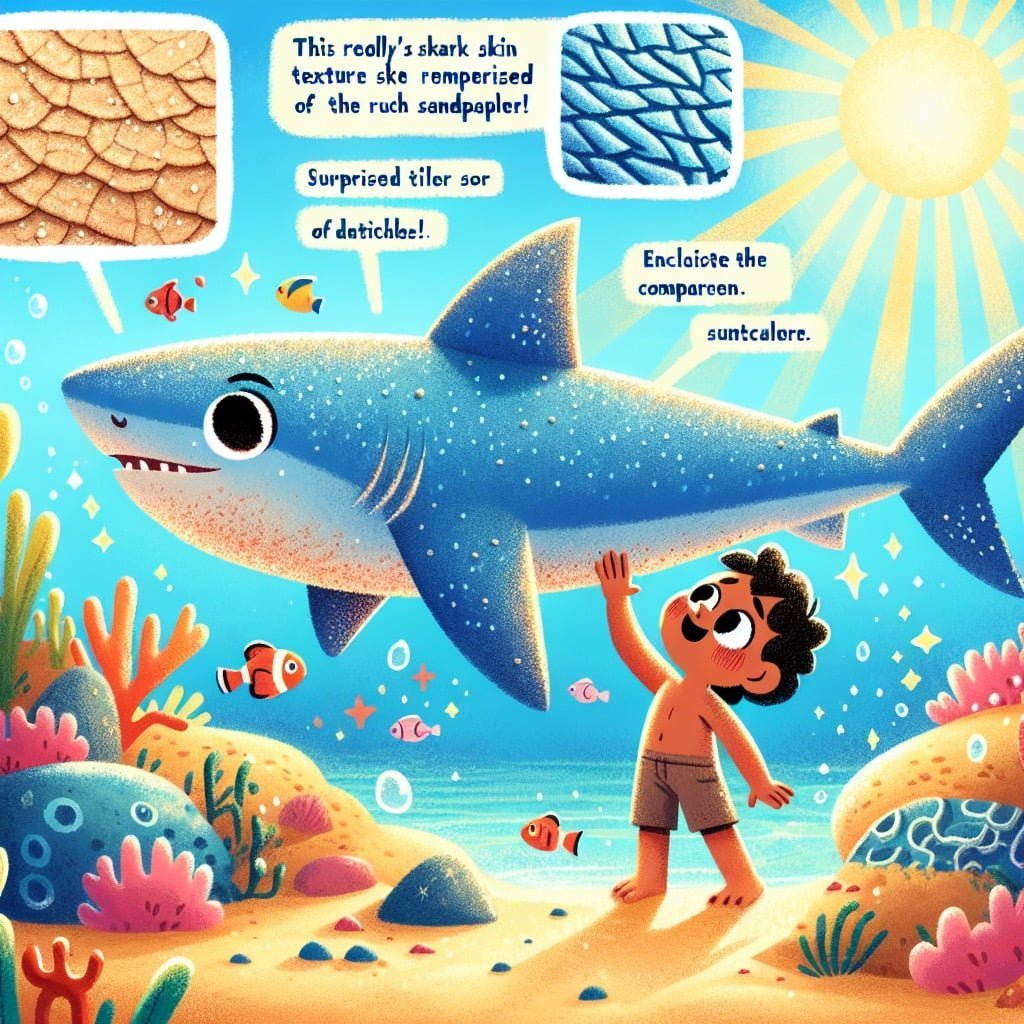
For younger kids: Shark skin feels rough like sandpaper because it’s covered in tiny tooth-like structures!
For older kids: Shark skin is covered in millions of tiny teeth-like structures called denticles, which make their skin incredibly tough and reduce friction as they move through the water, allowing them to swim faster and more efficiently.
Detailed explanation:Sharks have special skin that sets them apart from other fish and marine creatures. One of the most fascinating Shark Facts For Kids is that their skin is covered in tiny teeth-like structures called dermal denticles. These denticles are made of the same material as shark teeth, called dentin, which is a hard material that helps protect the shark’s skin from damage and abrasions.
The unique structure of shark skin with dermal denticles serves several important purposes. First, it helps to reduce drag as the shark swims through the water, allowing them to move more efficiently and swiftly. This is essential for hunting prey and avoiding predators in their marine environment. The denticles also provide protection against parasites and bacteria, as their rough surface makes it difficult for these organisms to attach and thrive on the shark’s skin.
Another interesting aspect of shark skin is its ability to heal quickly. Unlike other fish, sharks do not have scales that can be easily damaged or lost. Instead, their skin is constantly regenerating, allowing them to recover from injuries and wounds at a rapid pace. This regenerative ability is crucial for sharks, as they often engage in fierce battles for territory or mating rights.
In addition to its functional benefits, shark skin also has a unique texture that is sought after by humans. Some species of sharks, such as the smooth dogfish, have skin that is used in the production of leather goods, including wallets and belts. The rough texture of shark skin is not only durable but also stylish, making it a popular choice for fashion items.
In conclusion, sharks have special skin covered in dermal denticles that is essential for their survival in the marine environment. The unique structure of their skin provides protection, reduces drag, and enables quick healing, making sharks fascinating creatures with incredible adaptations. Learning about these Shark Facts For Kids can help children appreciate the wonders of the natural world and the importance of preserving these magnificent animals.
Shark Facts For Kids
9. A Whale Shark is the Largest Fish in the World
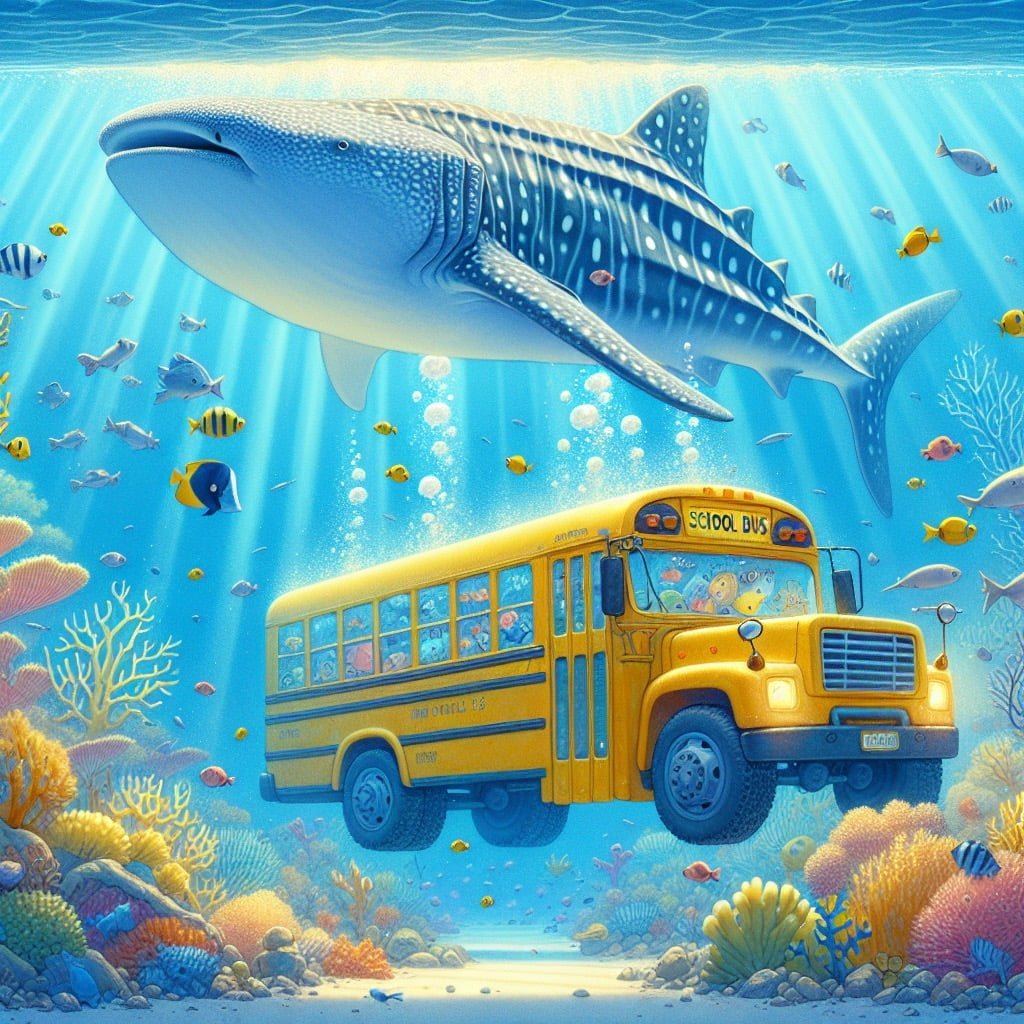
For younger kids: The whale shark is as big as a school bus—and it’s a fish!
For older kids: The whale shark holds the title for the largest fish species, with some individuals exceeding 40 feet in length. Despite their massive size, they are gentle filter feeders, eating tiny plankton and small fish.
Detailed explanation:Whale Sharks hold the title for being the largest fish in the world, growing up to 60 feet in length. These incredible creatures can weigh up to 60 tons, making them not only the largest fish but also one of the largest animals on the planet.
Despite their massive size, Whale Sharks are known for being gentle giants. They are filter feeders, meaning they feed on plankton, small fish, and other tiny organisms by swimming with their mouth wide open to scoop up food. Their diet is similar to that of other sharks, but unlike their predatory relatives, Whale Sharks pose no threat to humans.
One interesting fact about Whale Sharks is that they are ovoviviparous, meaning the embryos develop inside eggs that are retained within the mother’s body until they are ready to hatch. This is a unique reproductive strategy among sharks.
Whale Sharks are migratory creatures, traveling long distances to follow food sources and warm waters. They can be found in tropical and warm-temperate seas around the world, often congregating in areas where food is abundant such as near coral reefs or upwelling zones.
In conclusion, while Whale Sharks may be the largest fish in the world, their gentle nature and filter-feeding habits make them fascinating creatures to study and admire. These Shark Facts For Kids are a perfect introduction to the wonders of the underwater world.
Shark Facts For Kids
10. Sharks Have Unique Personalities

For younger kids: Some sharks are shy, and others are curious and like to explore new things!
For older kids: Researchers have found that individual sharks have unique personalities, with some being bold and adventurous, while others are more cautious and prefer to avoid novelty. This shows that sharks have complex behaviors and are not just mindless predators.
Detailed explanation:Shark Facts For Kids
Sharks may often be depicted as vicious predators in popular culture, but did you know that they actually have unique personalities? Just like humans, sharks exhibit individual behaviors, preferences, and tendencies that set them apart from one another.
Research has shown that some sharks are more bold and adventurous, while others are more cautious and reserved. This variation in personalities can impact how sharks interact with their environment, hunt for food, and even socialize with other sharks. For example, a bolder shark may be more likely to explore new territories or take risks when hunting for prey, while a more cautious shark may stick to familiar areas and use more strategic approaches to hunting.
These individual differences in personalities can also influence how sharks respond to external stimuli, such as changes in water temperature or the presence of other marine species. Some sharks may be more adaptable and flexible in their behaviors, while others may be more rigid and predictable.
Understanding the unique personalities of sharks is not only fascinating, but it also has important implications for their conservation and management. By taking into account the diverse behaviors and tendencies of sharks, scientists and policymakers can develop more effective strategies for protecting these animals and their habitats.
In conclusion, sharks are not just mindless killers – they are complex creatures with their own distinct personalities. By delving deeper into Shark Facts For Kids, we can gain a greater appreciation for these magnificent animals and work towards ensuring their survival for future generations.
Did You Know?
Sharks play a crucial role in regulating the populations of marine animals, ensuring a healthy balance in ocean ecosystems.
Summary of Shark Facts For Kids
Shark Facts For Kids: Dive into the Fascinating World of Sharks!
Sharks have mesmerized people for centuries with their mysterious allure and powerful presence in the oceans. But did you know that learning about sharks can be both educational and inspiring for kids of all ages? By delving into the world of shark facts, children can unlock a treasure trove of knowledge about these incredible creatures.
From their unique adaptations and behaviors to their crucial role in the marine ecosystem, sharks offer a fascinating glimpse into the wonders of the natural world. By exploring fun facts about sharks, kids can not only expand their understanding of marine life but also develop a deep appreciation for the importance of conservation.
Moreover, learning about sharks can spark curiosity and creativity in children, encouraging them to ask questions and seek out new information. By fostering a sense of wonder and excitement about the underwater world, shark facts can ignite a passion for conservation efforts and instill a sense of responsibility towards protecting our oceans.
So, why wait? Discover the captivating world of sharks and embark on an enriching journey of exploration and discovery with Shark Facts For Kids. Join us in unraveling the mysteries of these magnificent creatures and together, let’s inspire the next generation of marine enthusiasts and conservation advocates. Dive in today and be amazed by the awe-inspiring world of sharks!
Sources and additional information for Shark Facts For Kids
WikipediaBritannicaSan Diego Zoo KidsThe Smithsonian InstitutionDK Find Out!Australian MuseumWorld Wildlife FundThe Nature ConservancyAnimal PlanetMonterey Bay AquariumPBS NatureSmithsonian’s National Zoo & Conservation Biology InstituteWorld Wildlife FundAnimal Diversity Web (University of Michigan)IUCN Red List of Threatened SpeciesThe Cornell Lab of Ornithology – All About BirdsNational Audubon SocietyEncyclopedia of LifeSeaWorld Parks & EntertainmentAustralian Museum – AnimalsEncyclopedia of Life




